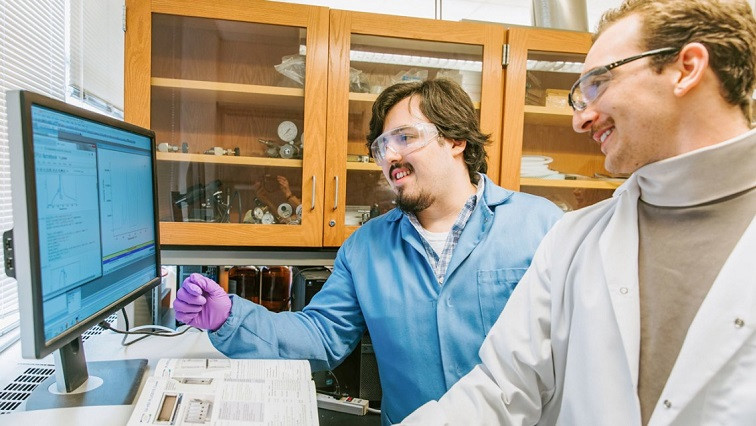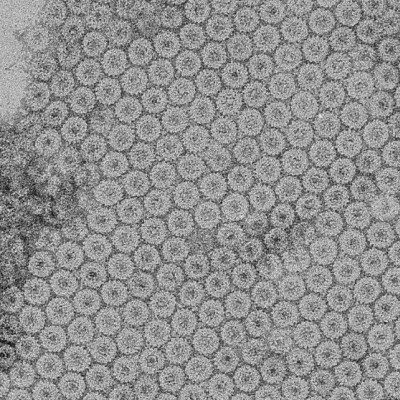The research, published in print Oct. 8 in the journal ACS Nano, is the first to reveal intermediate states in cadmium sulfide nanoparticles as they isomerize, changing from one atomic form to another while keeping their chemical composition.
“Think of it as a Rubik’s Cube – we only knew about the final organized state, but now we know there are multiple middle arrangements before that final end state,” said Richard D. Robinson, associate professor of materials science and engineering and senior author of the study.
Robinson’s research group had previously discovered in 2019 that cadmium sulfide “magic-sized clusters” developed in their lab could transform between two distinct atomic structural states, an alpha phase and a beta phase. The transition was too fast to observe, leading researchers to wonder if there might be any intermediate atomic arrangements, such as those observed in organic materials.
Led by Reilly Lynch and including Thomas Ugras, both doctoral students in the Robinson Group, an experiment was designed using a mild chemical to initiate the transformation, allowing it to occur at a slower pace. They observed a series of three stable intermediate states between the alpha and beta phases, each with a different bandgap, or energy level, that controls the material’s electronic and optical properties, such as how it absorbs light or conducts electricity.
“The surprising thing is, the new transition states are nearly atomically identical, but their electronic structure is vastly different – their energy gap differs by as much as half an electron volt from its final state. That’s enormous,” Robinson said. “It’s like turning a red rose blue. Identical atomic structures should have the same energy absorption properties, but this breaks that rule and it’s opened up a whole new mystery.”
Lynch said he plans to continue the research by studying the surface interactions and polarization of the nanoclusters using X-ray photoelectron spectroscopy.
“There’s a decoupling of the atomic structure and electronic structure in these nanoclusters. This challenges the conventional understanding and suggests that there may be more to discover about how atomic-scale interactions can influence material properties in unexpected ways,” Lynch said.
An ability to harness the mechanism for the electronic change could lead to materials with a dynamically changing bandgap, such as tunable solar cells that optimize their performance based on the color of the light.
“As the sun changes its angle from, say, midday to afternoon, or from summer to winter, its color changes,” Robinson said. “In the future it may be possible to use these isomerization methods to dynamically tune our photovoltaic solar cells to have prime absorption for those different colors.”
Another application could be a collection of quantum dots that emit different colors of light. To make colors for television displays, manufacturers typically have to make dots of different sizes, but it would be more efficient to make a batch of same-sized dots and just modify their surface. This could lead to better color quality, more efficient production, and more versatile displays for devices.
Read the original article on Cornell University.







